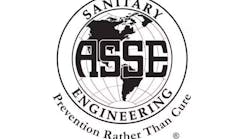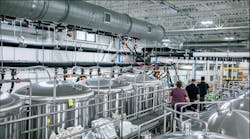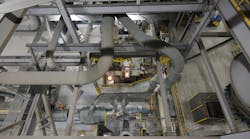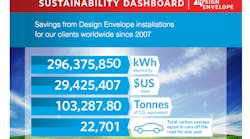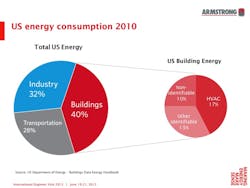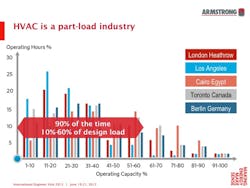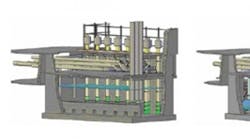Rising energy costs and sustainability governance are driving the development of new technologies to improve the performance of buildings around the world. For one company in particular, Armstrong Fluid Technology (formerly Armstrong Pumps), the search for creative technologies that simplify design, are cost-effective, and are kind to the environment has been a core mission since Samuel Allan Armstrong established his design and engineering company in Toronto during the 1930s.
Today, this third-generation company is, according to Chairman Charles Armstrong, "recognized internationally for design efficiency, long service life, and operating economy." That became apparent during the company's 2013 International Engineers Visit (#iev2013) last week in Toronto.
There, the company focused on its Design Envelope (DE) technology, which integrates the latest selection, control, and hydronic tools into heat-transfer solutions that naturally accommodate changes in building design and demand to ensure system performance is optimal at all times.
The International Engineers Visit showcased Armstrong's commitment to environmental sustainability and a number of products, including vertical in-line pumps and dualARM pumps, both of which are available in Design Envelope models, as well as a fully integrated, ultrahigh-efficiency, modular chiller plant. This technology, according to company CEO Alexander (Lex) van der Weerd, provides building owners, consulting engineers, and mechanical contractors with savings, reduced equipment-selection time and installation costs, and design flexibility. All of this and the products meet ASHRAE Standard 90.1-2010 requirements related to balancing, pipe sizing, and hydronic pumping.
Net-Zero-Energy Buildings is the Goal
Brent Ross, PE, director of Armstrong's Core/Hydronics Products unit, told the audience that the road to net-zero-energy buildings began during the 1980s, and the building envelope itself became the focus of that movement during the early 1990s.
It is no secret that commercial buildings in the United States make up 40 percent of total energy consumption and that mechanical systems account for 17 percent of that. Furthermore, the HVAC industry is a "part-load" industry. Armstrong Regional Sales Manager David Lee pointed out that most buildings are designed around the peak day requirement, but the systems actually spend very little time at that level. Huge savings can be obtained if an HVAC or pumping system is designed around where it will spend most of its time (which is at less than 60 percent of peak load).
So, according to Ross, there is a way to reduce energy use and improve performance at a lower cost.
"Popular engineering thinking," Ross said, "is that to achieve energy reductions and better performance costs more initially. Armstrong disagrees. Our belief is we can get more performance for less cost."
Ross explained that this is accomplished through three fundamental Design Envelope "ingredients:"
- Enabling technology, including digital integrated controls, onboard intelligence, and economical variable-speed inverters that can be packaged together at the factory and delivered to a site. In addition, using modeling software, Armstrong provides designers with better selection technology, as well as economic control logic built into equipment.
- Capabilities such as demand-based controls, all-variable-load/speed equipment, as well as sensorless/sensoring technology (whereby equipment provides information to a building-management system). Additionally, Armstrong says its controls provide continuous/self-regulating commissioning (automatic data and metering, internal diagnostics/data storage, internal/external matchup of components with harmonization of external equipment).
- Design Envelope (DE) equipment, including pumps, domestic water boosters, and more.
Ross continued, "Beyond variable speed, demand-based control, fluid flow, heat transfer, and variable speed goes together to create the best performing equipment that may be complex internally, but very simple externally. In other words, complexity made simple."
The end result is that you can create optimum life-cycle building performance that is affordable. Ross said the benefits include lower first costs: The equipment is small enough that it takes up as much as 30-percent less space in a mechanical room. He also said DE pumping systems have a 77-percent life-cycle-cost savings over throttled equipment and that DE integrated control provides 50-percent more savings than traditional chiller plants.
In addition to the technology presentations, attendees and guests were taken on a tour of the Armstrong facility in suburban Toronto, as well as a tour of the Newnham campus of Seneca College in Toronto, which is reducing its greenhouse-gas emissions by nearly 600 tons per year using the Armstrong Integrated Chilled Water Plant Package, and a virtual tour of the Methodist Medical Center in Dallas.
For more information about Amstrong Fluid Technology and its products, services, and history, click here.

